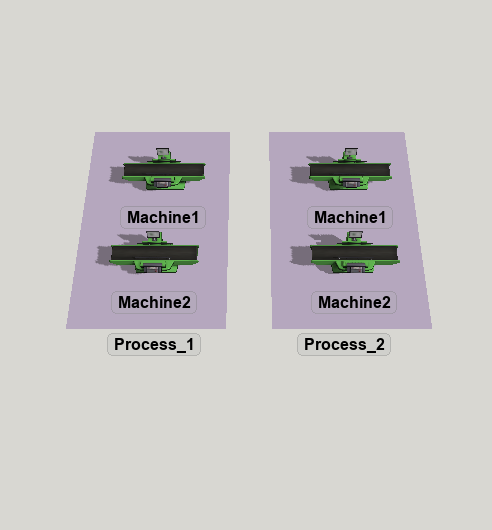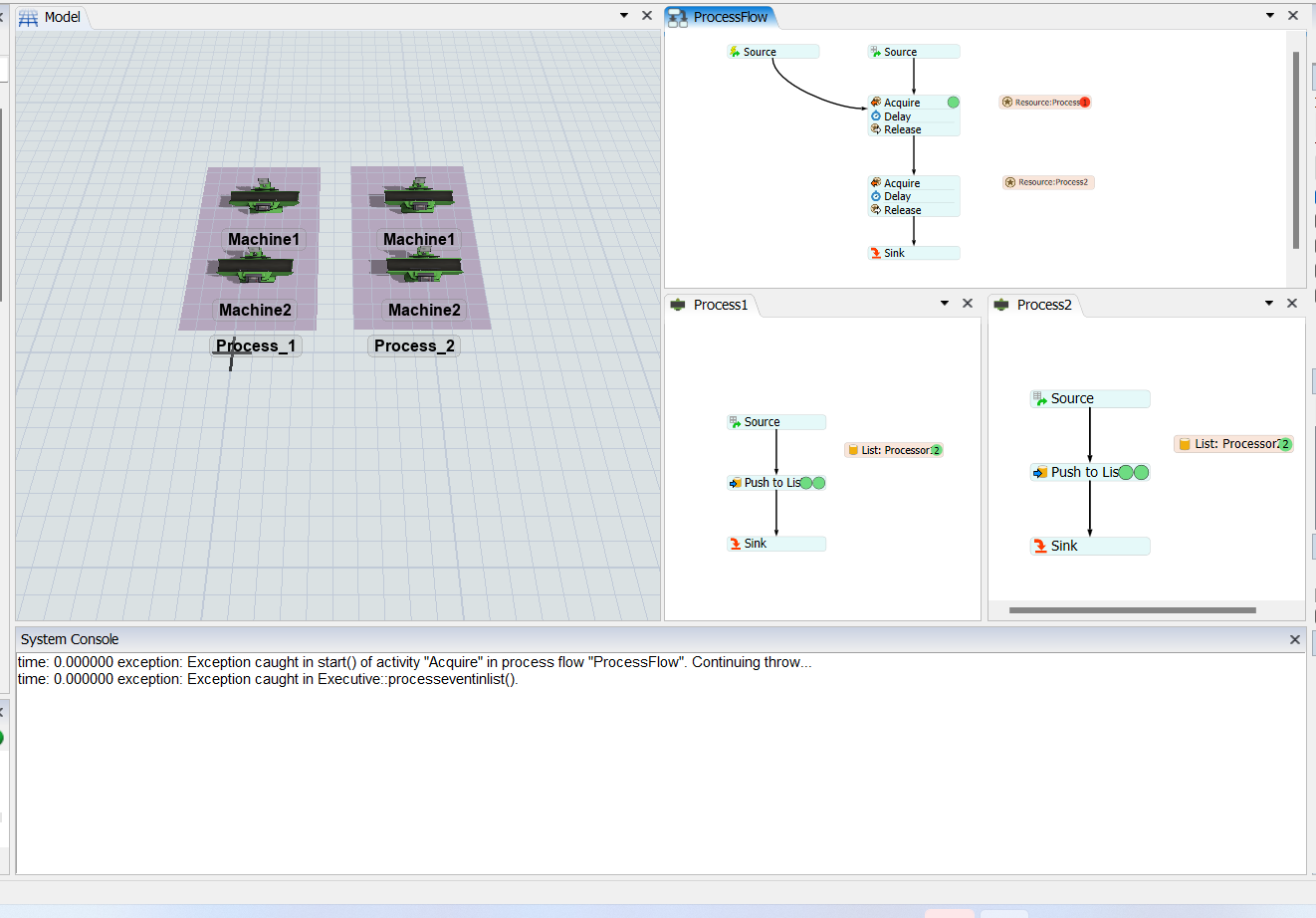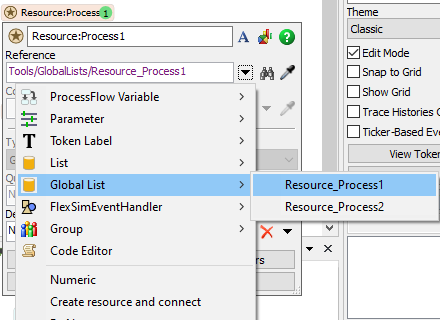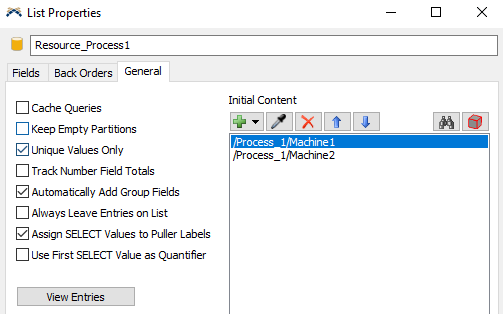Hi Team,
I am working on model where each product has to go through 2 process, Process1 and Process2. Both the process has 2 machines to perform job on 2 product at a time. Then, Product moves to Process 2. If Process2 is not completed, product will wait in buffer available between process1 and process2.
I am thinking to model it using object process flow since there may n number of machines for both the processes and product will enter in any machines based on availability.
Is it possible to model using object process flow since process2 is dependent on process1?
If it is not possible to use object process flow, what is best to model it in terms of scalability?
Thank you!




